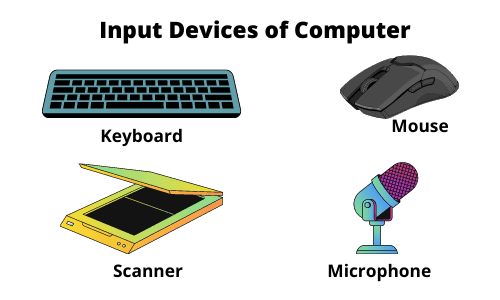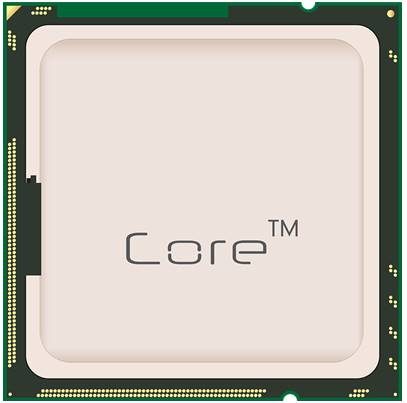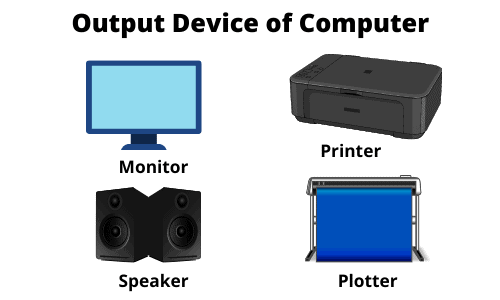Hello Learners, Today we will learn what are the Basic Structure of Computer?
In this post, I will explain the structure of computer system in detailed.
This Article is Best on the whole internet.
Understanding how a computer is put together can make a computer novice feel more confident in making the right purchase.
Knowing the terms and what they do will also help you learn to use your new purchase more efficiently.
A computer is a machine that can store, retrieve, and process data. It's one of the most popular household appliances in the world.
If you want to learn how to build a computer, you need to know how it's structured.
I Guarantee you, after reading this article you will not need to read any other Articles. In fact, our readers are satisfied with this blog post.
What are the Structure of Computer?
There are a number of components that make up the computer. These components work together to process data and instructions, and to display information on a screen.
Understanding how each component works can help you better understand what’s going on inside your computer.
The components of the computer and the connectors and sockets on the motherboard all work together to make it possible.
In this guide, we'll take a look at what parts make up a computer and how they work together to provide you with the tools you need.
You'll learn how each part contributes to your computing experience and what you need to know when choosing a computer for everyday use.
There are various structure of computer, which are given below.
- Input Unit
- Central Processing Unit
- Control Unit
- Memory Unit
- Output Unit
Read Basic Fundamental of Computer System
- What is Computer ?
- What is CPU ?
- Basic Components of Computer
- Parts of Computer
- Generations of Computer
- Classifications of Computer
- Applications of Computer
- Uses of Computer System
- Functions of Computer
- Uses of Computer Graphics
- Uses of Internet
- Uses of Mobile Phone
- Uses of Laptop
- Types of Laptop
- Different Types of Computer
- Block Diagram of Computer
- Advantages of Computer
- Disadvantages of Computer
- Characteristics of Computer
- Limitations of Computer
- Capabilities of Computer
- Elements of Computer System
- What is Accuracy in Computer ?
- What is Speed in computer?
- What is Portable Computer and its types?
- Advantages and Disadvantages of Mobile Phone
1. Input Unit

Input Unit of Computer
A computer is a machine that processes information and stores it as a form of data.
The input unit of a computer is the device that controls one or more input devices to enter data into the computer.
The input unit controls the mouse, keyboard, joystick, scanner, microphone, or other devices.
Input units are also known as I/O (input/output) devices.
Input units enable people to use software programs on their computers by entering commands and text, which can operate different parts of the program like menus and buttons.
Input units allow you to make selections and navigate through screens on your desktop or laptop without using your mouse or keyboard at all times.
2. Central Processing Unit

Picture of Computer CPU
The Central Processing Unit or CPU is a critical part of the computer. In fact, it’s the brain of your PC.
The CPU is made up of millions of tiny switches called transistors. These switches are used to store and send data about your computer usage.
The CPU can also be thought of as the “brain” of your PC because it’s responsible for carrying out all the instructions that you give it.
When you type on your keyboard or click on something with your mouse, this information is sent to the CPU so that it knows what to do next.
It then sends back information to tell you what happened as a result of your input.
A Central Processing Unit is the main processor of a computer system.
It is responsible for interpreting and executing instructions in any program, so it is essential to the function of your computer.
The CPU performs billions of calculations per second, which can be harnessed to solve complex problems or power new features on the latest app you downloaded.
3. Control Unit
You might know what a CPU is, but there’s another component involved in the processing of data: the control unit.
Although it doesn’t receive any input from the outside world, it sends out commands to other components, like the register and instruction decoder.
A computer’s control unit is the master of everything that goes on inside.
It handles everything from executing instructions to running programs.
Even though it doesn’t have a physical form, it is the most important component of your computer.
It has to do all of this work with very little power, so it can’t afford to make any mistakes.
The control unit is the brain of your PC, so let’s take a closer look at how this all-important subunit of the computer works.
4. Memory Unit
Memory is an important component of any computer.
It is the place where data, including programs and files, are stored so they can be accessed quickly by the CPU.
There are two main types of memory: random access memory (RAM) and read-only memory (ROM).
RAM stores data as it is being used, while ROM retains data even when power isn't provided.
The size and type of memory in a computer will impact the performance of the system and how quickly you can load programs and files.
RAM is needed to store your projects and work on them, so you always want to make sure you have enough RAM.
5. Output Unit

Output Unit of Computer
Output Units (OU) are devices that can be used to output graphics or text onto a computer monitor.
Output units are also known as video cards, graphics cards, display adapters, and monitors.
They are an integral part of any computer system and they make sure that all the information you see on the screen is accurate.
It shows everything that is stored in your computer's memory or hard drive.
The primary function of the output unit is to convert what you see on your monitor into actual pixels on the screen.
The more pixels your monitor displays per inch determines how sharp your screen will look.
Conclusion
The computer is one of the most important inventions in history. It has changed how we do just about everything, from work to leisure. Computers are now an integral part of our daily lives.
For some people, it can be difficult to wrap their heads around what a computer even is, let alone how it works.
This article will help you understand the basics so that you can better appreciate this amazing invention.
A computer is a machine that manipulates data according to a list of instructions. Computers have six main components: a central processing unit, memory, input and output devices, and storage devices.
These components are arranged in four sections.
The first section is the computer's CPU, which does the data manipulation process.
In the second section is the computer's memory, which holds programs and data for as long as needed.
In the third section is the computer's input/output devices, which allow diskettes or other media to be inserted into the system.
And lastly, in the fourth section is the computer's storage device(s), which contains permanent information such as documents and pictures.
We hope that you have fully understood about basic structure of computer system, if you still have not understood, then please comment on us.
If you liked this article, then you can share this post.
clear and precise information,,,thank you
Thanks, Gift Wambua